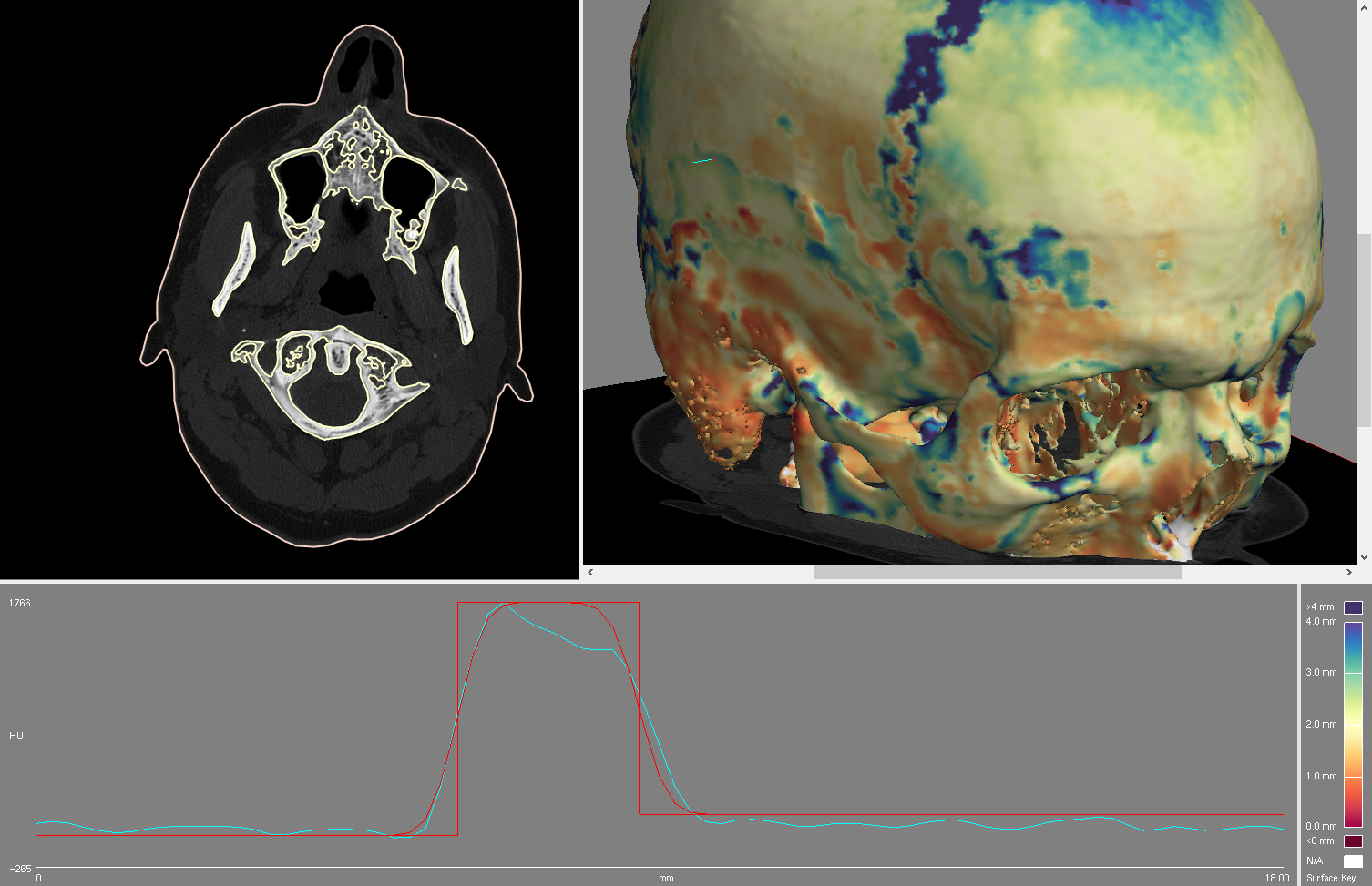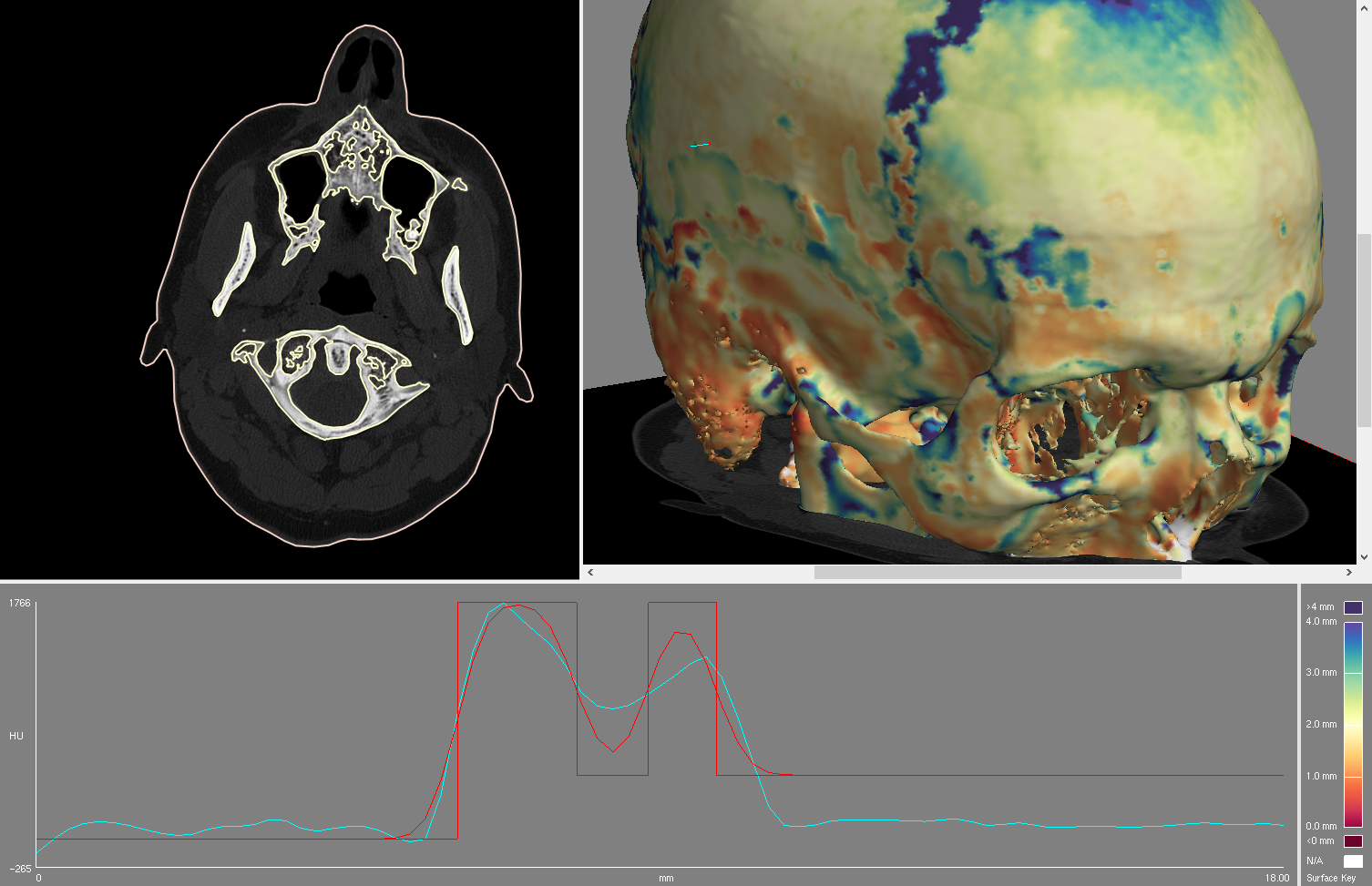Main > GMT_4YP_16_2
Dr Graham Treece, Department of Engineering
F-GMT11-2: Medical imaging and computer graphics: accurate measurement of the skull cortex
 |  |
| Here are some cortical (the outer bone surface) thickness measurements over a skull. These can be really useful for trying to predict effects on bone, for instance mechanical forces during a head injury, or how the skull varies with age. The colour shows thickness from 0 to 4 mm, and in this location the cortex is just one layer of bone. | However, in many places the skull has two layers or 'tables'. The apparent discontinuities are where we are suddenly switching between a thickness measurement of both layers, and just the outer layer. This project is about trying to make consistent measurements of either the whole cortex, or of just the inner or outer table. |
| | |
Bone fracture is a major issue affecting millions of people annually, and we have recently been involved in research which has the potential to contribute significantly to both our understanding of fracture and how various preventative measures affect bone. The advances have come from a much more precise (and hence much more sensitive) measurement of the bone cortex (the denser layer surrounding the less dense bone in the middle). As well as contributing to our understanding of fracture, this technique is also being used to underpin models of bone used in mechanical analysis, for instance to see what happens to the skull during a head injury. It is also increasingly being used by paleo-anthropologists who are interested in the properties of very old bones.
The existing technique expects to measure a single 'layer' of bone, but in many places bone has more than one layer: for instance in the skull there are two layers: an inner and an outer table, which in some places join together to become just one. In these areas it is not clear whether our measurements relate to one or both tables. The aim of this project is to try to disentangle this information, by looking at measurements made from either side of the bone, to try to split them into clean sets of measurements of either the whole skull thickness, or just the inner and outer tables. This is an interesting problem in computational geometry, but also in surface-based registration and visualisation
This is an algorithmic development / computational geometry / software project, so experience of writing software is essential, though the development could also be done using Matlab.
Click here for other medical imaging projects offered by Graham Treece.
